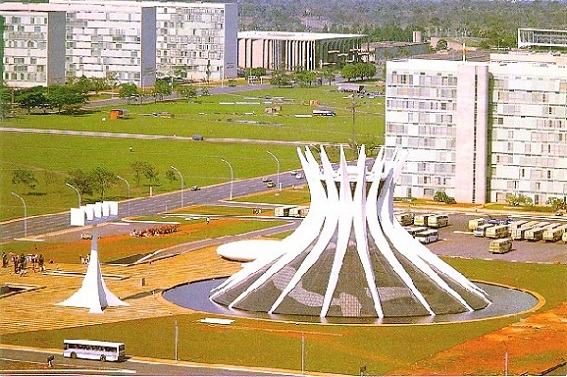
Brasilia Cathedral, architectural work of Oscar Niemeyer
brazil, The capital of Brazil, it was inaugurated on April 22, 1960, in the central area of the country. Only five years before, the area seemed like a desert, without people, with a shortage of water, few animals and plants.
Until the President Juscelino Kubitschek, who became president in 1956, invited the best Brazilian architects to present projects for the new capital.
Oscar Niemeyer, currently one of the most famous architects in the world, was the main architect who managed to combine straight and round shapes to create innovative architectural masterpieces. While Lucio Costa, a Brazilian urban planner, devised a lay-out combining simplicity and functionality.
This is why Brasilia is a planned city created to be the capital of Brazil that covers 5.802 square kilometers (2,204.2 square miles) on the central Planalto plateau, at an average altitude of 1.172 meters (3.845 feet) above sea level. It has a population of almost 3 million people, and it is the fourth largest city in Brazil.
History
The founding of Brasilia fulfilled an article in the Brazilian Constitution dating from 1891, which establishes that the capital of Brazil must be transferred from Rio de Janeiro to a new site in the center of the country.
The idea was first hatched even earlier, in 1827, who advised Emperor Don Pedro I on such a plan. The objective was to move the capital to the interior, which will help to redistribute the population of Brazil.
The city of Brasilia grew faster than expected, to the point that modifications had to be made with the original plan. In the original plan, the streets would not have traffic signs. Today that is no longer true, and like many major cities in Brazil, Brasilia has its share of traffic jams and parking problems.
Regarding the climate, Brasilia has a tropical savanna climate. The temperature is fairly uniform throughout the year, although the hottest month tends to be September, which records an average high of 28 ° C (82 ° F). On the other hand, June and July tend to have the lowest average low temperature, at 11 ° C (52 ° F).
The wettest months in Brasilia are from November to January, with the total precipitation for December of approximately 24 cm (9,4 inches).